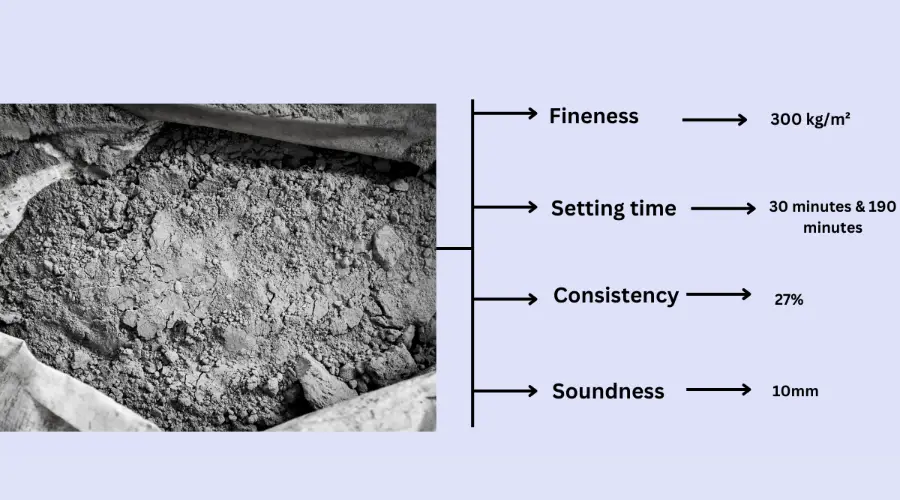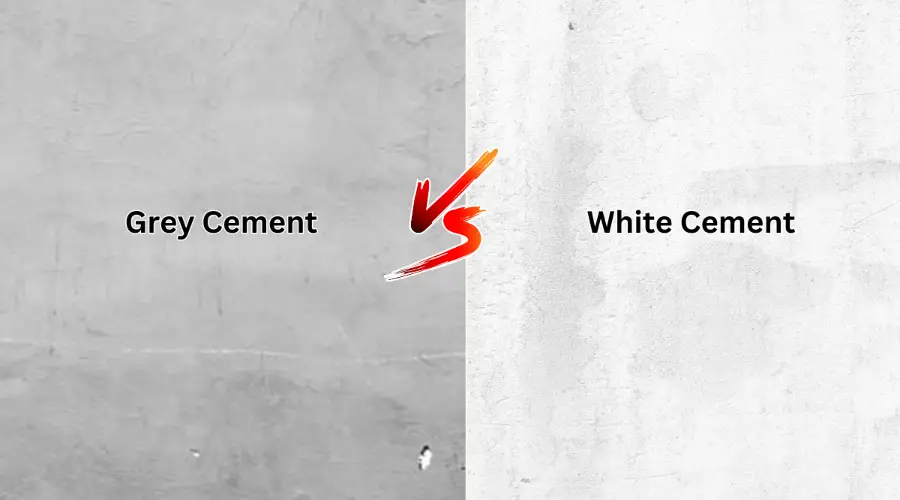Selecting the right cement for your dream construction is crucial, as it plays a major role in binding the building materials, providing a proper finish, and improving the structural integrity. Numerous grey cement types are available on the market. Here, we look at everything you need to know about Grey Cement.
What is Grey Cement?
Grey cement is one of the most popular and widely used in construction. It is made of finely ground lime, silica, iron oxide, and other additives to produce grey cement. This cement is known for its versatile uses in producing ordinary, standard, & high-strength concretes, mortars, ready mixes, grouts, and almost all construction types.
Types of Grey Cement
Grey cement can be grouped based on its chemical properties into these types:
- Ordinary Portland Cement (OPC): This is the most commonly used cement for general construction work.
- Rapid-Hardening Portland Cement: This type of cement is used when quick strength is needed, like in projects requiring fast construction.
- Low-Heat Portland Cement: This cement is ideal for large structures like dams because it generates less heat during the setting process, preventing cracks.
Properties of Grey Cement

Fineness
The smaller the particle size, the greater the area-to-volume ratio. On average, the particle size of the OPC should be 45 microns, and approximately 95% of the cement particles are smaller than 45 microns. The fineness of the grey cement is 300 kg/m².
Setting time
Generally, the initial setting time should not be too short, and the final setting time should not be too long. Grey Cement’s initial setting time is 30 minutes, and the final setting time is 190 minutes on average.
Consistency
The water-cement ratio plays a major role in the consistency of the grey cement. The normal consistency of grey cement is 27%.
Soundness
It measures the stability of the grey cement’s volume after setting. It is tested using autoclave expansion, where the grey cement measures soundness of 10mm.
Relative Density/Specific gravity
The relative density or specific gravity of grey cement ranges from 3.1 to 3.5 Mg/m³, excluding the air voids between the particles.
Bulk Density
The bulk density of the grey cement ranges from 1200-1600 kg/m³. It is calculated by dividing the mass of cement particles plus air between particles by the volume of the cement sample.
Application of Grey Cement
- Grey cement is used in numerous masonry works for residential, commercial, and infrastructure projects.
- Due to its high durability, grey cement types are used to construct buildings, pavements, bridges, and foundations.
- It can be used as a filler to seal cracks, holes, and erosion that develop in the structure.
- It is widely used to manufacture ordinary, standard, and high-strength concrete.
- It is used as the base grout to lay tiles.
- This cement is used for plastering to give the surfaces a smooth and uniform finish.
Manufacturing of Grey Cement
The manufacturing process of grey cement can be done through two processes: Wet & Dry Process. Here is a step-by-step process of grey cement preparations.
Wet Process
- The raw materials, such as lime and clay, are fed to the ball mill, and a small quantity of water is added to the mix.
- The steel balls in the ball mill grind the raw materials to form a pasty mix.
- The slurry is passed to silos, and the ingredients are added in proper proportions. Thus, the slurry has a moisture content of 35%.
- The slurry is then passed through a rotary kiln under a temperature of 1450℃, which transforms the nodules into clinkers.
- The clinkers are then cooled, and a small quantity of gypsum is added to avoid the quick setting of cement.
- The prepared grey cement is then transferred to silos and packed, ready for sale and transported to the construction site.
Dry Process
- The calcareous and argillaceous materials are ground and brought to 20 mm size using mechanical crushers in the ball mill.
- After proper grinding, the raw materials are mixed to appropriate proportions and transferred to the rotary kiln.
- The rotary kiln is preheated to 900℃ for two hours before adding the grounded raw materials mix.
- The raw materials in the rotary kiln form into clinkers of size 4 mm to 10 mm.
- A small quantity (2% to 3%) of gypsum is added to the clinker to decrease the quick setting of the clinker.
- The grey cement is then made with calcium sulfate as a byproduct.
- Grey cement is then transferred to silos, packed and becomes ready for sale and transport to construction sites.
Advantages & Disadvantages of Grey Cement
Advantages
- Grey cement is versatile and used in various construction applications, from small-scale projects to large infrastructure projects, satisfying different construction needs.
- It has high compressive strength and can resist heavy loads. Its high strength and durability properties ensure longevity and stability in construction.
- Grey OPC cement is widely used and easily available on the market.
- It is highly resistant to external weathering and can be used for exposed and external structures.
- It is affordable and is a cost-effective construction material.
- It can be easily mixed with aggregates, additives, and water, making it flexible enough to customise the properties based on requirements.
Disadvantages
- It produces carbon dioxide during manufacturing, marking a large carbon footprint.
- Cement production consumes a lot of energy, especially when heat is applied to the rotary kiln of the ball mill.
- A poorly maintained concrete structure that uses grey cement is prone to cracks and shrinkage, affecting structural integrity and requiring reinforcement.
- Grey cement doesn’t provide adequate resistance against chemical attacks.
- The final setting time of OPC grey cement is considerably slow compared to other cement types, which can delay the construction process.
Grey Cement vs White Cement

| Parameters | Grey Cement | White Cement |
| Colour | It is grey due to the presence of oxides in raw materials. | It is light in colour, resembling the white palette. This is due to the lower oxides in raw materials. |
| Texture | The texture of the grey cement is coarse and granular. | The texture of white cement is fine, smooth and powdery. |
| Manufacturing time | It requires less manufacturing time compared to white cement. | It takes more manufacturing time. |
| Cost of Manufacturing | The advanced machinery and technology in the process help lower manufacturing costs. | Although they are inexpensive, the cost of manufacturing white cement is high. |
| Energy consumption | The energy consumed for manufacturing grey cement is low compared to white cement. | The energy consumed for manufacturing white cement is comparatively high. |
| Purpose | The main purpose of using grey cement is for numerous construction purposes. | It is mainly used for architectural and design purposes. |
Conclusion
Grey cement provides numerous advantages to any construction project, irrespective of the size and usage of the construction. Although there are multiple benefits such as stability, performance, and durability, they also have challenges, including environmental impact, low setting time, and prone to cracks, shrinkage, and chemical attacks. Despite the pros and cons, it is a proven solution for your construction needs worldwide, making it the most preferred cement type.

